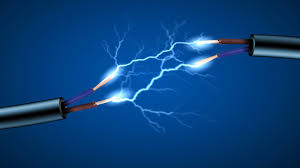James Watt (1736-1819)
James Watt was a Scottish inventor who made improvements to the steam engine during the late 1700s. Soon, factories and mining companies began to use Watt's new- and- improved steam engine for their machinery. This helped jumpstart the Industrial Revolution, a period in the early 1800s that saw many new machines invented and an increase in the number of factories. After his death, Watt's name was used as the unit of power .
 |
| Story of Electricity |
Alessandro Volta (1745-1827)
Volta, Alessandro, Count, Italian physicist, known for his pioneering work in electricity, invented the Electric Battery in 1800.Using zinc, copper and cardboard, this Italian professor invented the first battery. Volta's bettery produced a reliable, steady current of electricity. The unit of voltage is now named after Volta.
André-Marie Ampère (1775-1836)
André-Marie Ampère, a French physicist and science teacher, played a big role in discovering electromagnetism. He also helped describe a way to measure the flow of electricity. The ampere, which is the unit for measuring electric flow, was named in honour of him.
Georg Ohm (1787-1854)
German physicist and teacher Georg Ohm researched the relationship between voltage, current and resistance. In 1827, he proved that the amount of electrical current that can flow through a substance which is electrical flow. This is known as Ohm's Law.
Michael Faraday (1791-1867)
Michael Faraday, a British physicist and chemist, was the first person to discover that moving a magnet near a coil of copper wire produced an electric current in the wire.
Michael Faraday, a British physicist and chemist, was the first person to discover that moving a magnet near a coil of copper wire produced an electric current in the wire.
Thomas Edison (1847-1931)
Thomas Edison invented electric bulb. He attached wires to a thin strand of paper, or filament, inside a glass globe. The filament began to glow, which generated some light. This became the first incandescent bulb. A thin, iron wire later replaced the paper filament.
Thomas Edison invented electric bulb. He attached wires to a thin strand of paper, or filament, inside a glass globe. The filament began to glow, which generated some light. This became the first incandescent bulb. A thin, iron wire later replaced the paper filament.



No comments:
Post a Comment